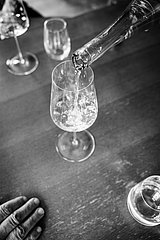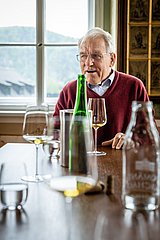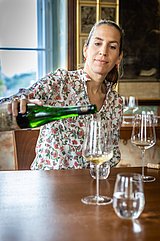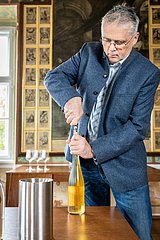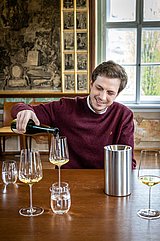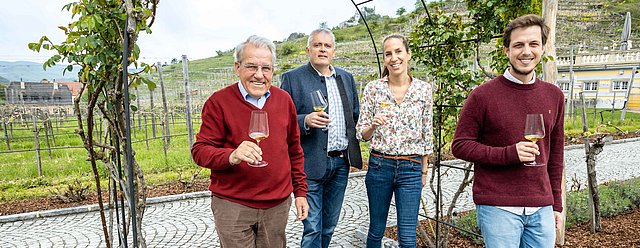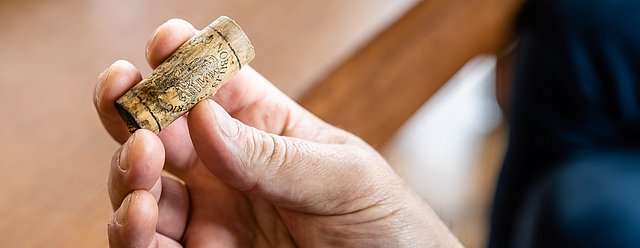
Happy Birthday, Vinea!
Vinea Wachau celebrates its 40th anniversary on 17 August 2023 We propose a special toast for each of the four decades. With four special wines.
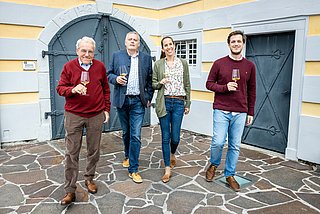
Ried Schütt. Riesling. Smaragd. Three names that tell you what you have in your glass. At the start of our journey through the history of Vinea Wachau is a 1989 vintage from the Knoll estate. The vintage marks the first stage of Vinea Wachau’s 40-year history. Today the association numbers roughly 200 vintners spread between Mautern an der Donau and Spitzer Graben. At its founding, Vinea Wachau had 24 – with Emmerich Knoll’s estate about midway between them. “Should this be an exclusive club or one open to anyone? was the question we faced back then. Today I know we made the right choice when we decided to put Vinea Wachau on a broad base.
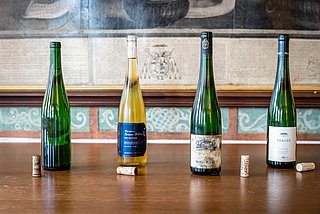
The idea for Vinea Wachau came from Willi Schwengler, who back then was the director of Winzergenossenschaft Wachau, now known as Domäne Wachau. Gifted with creativity, he sensed that to ensure the future of steep-slope viticulture the name ‘Wachau’ needed to become a brand. But it would take more than a common emblem, that the founders also knew. That’s why in the years to follow ‘Steinfeder’, ‘Federspiel’ and ‘Smaragd’ were developed as wine style categories – three labels to distinctly classify Wachau whites. “Winelovers then know precisely what to expect,” as Julia Jamek. puts it.
A Steinfeder for a light start. Then a middleweight Federspiel. Finally Smaragd, standing for the Wachau’s most complex wines. To this day, the triumvirate is a key to our winegrowing region’s popularity. “Willi Schwengler said back then: ‘Smaragd is a wine for after Sunday church service’,” Emmerich Knoll recalls with a laugh. And when is the time to enjoy a Federspiel? “Any time,” everyone agrees. As does Heinz Sigl from Rossatz, who for the following decade picked out a challenging vintage, a 1998 Grüner Veltliner Smaragd Ried Steiger. Even 25 years later, this wine is still fantastically drinkable, they all agree. “Especially the vintages people are first wary about perform superbly over time,” Heinz Sigl is convinced.
Many wines seem destined to be left to themselves for years. The secret here is the Wachau’s unique approach to vinification, along with the rocky soils so characteristic of the region. Like Ried Klaus in Weißenkirchen, where wine number three originated: a 2003 Riesling Smaragd Ried Klaus from the Jamek estate. This takes us back to the 2000s, the decade when Vinea Wachau’s members took the next big step: the Codex Wachau as a statement of their common commitment to the principles of natural wine production – absolutely no enrichment, concentration or artificial flavouring of wines, instead hand-picked grapes as the source of Vinea wines’ DNA. “Quality considerations aside, it’s a matter of ethics: do I value the vines so much that I harvest their fruit by hand?” is how Emmerich Knoll sees the issue.
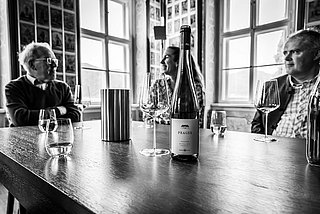
The fourth wine of the selection also might give cause for reflection. The 2013 Riesling Smaragd Ried Achleiten from the Prager estate stems from a decade when climate change was already being felt. Today this wine represents all of the qualities typical of Wachau Rieslings. Longevity. Finesse. Precision. Like a house carefully designed to last generations. “Every member estate can build their house as they wish. Our common foundation is Vinea Wachau,” is how Emmerich Knoll sees it. We continue to build, now to ensure sustainability. Beginning with the 2023 vintage, Vinea Wachau is attaching the Sustainable Austria quality seal to its labels. Because moving forward together, we achieve more. In the region. As a society. And for wine production. Cheers!
The Vinea founders saw Smaragd is a wine for after Sunday church service. And Federspiel? For any occasion.
